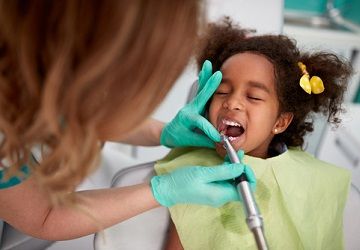Your Guide to Communicating with Pediatric Dental Patients
February marks National Children's Dental Health Month, according to the American Dental Association. If you want to improve your communication skills with pediatric dental patients, you need to put yourself in the child's shoes, and understand that the way they see dentistry and the dental experience is not the way you see it. How you explain treatment and the manner in which you explain it speak volumes. What follows are some tips to improve your communication strategy.

February is National Children’s Dental Health Month, and if you’re seeing pediatric patients, you know how difficult it can be to connect with them. Many children are frightened and overwhelmed during dental visits, and this is because children process information differently than adults. It’s important to keep in mind that children are not simply smaller versions of adults, something many adults tend to forget.
If you want to give your pediatric patients the best dental care possible, you have to try to make a genuine, meaningful connection with them despite the age difference. So how do you make meaningful connections with children? How do you communicate effectively with them to calm them, get them to trust you, and ensure cooperation as you try to work?
Children’s Communication Needs
According to an article published in the journal Pediatrics, there are two main types of communication needs that dental professionals must be aware of when seeing pediatric patients:
1. Cognitive needs, which are demonstrated by a child’s need to know and understand, and
2. Affective needs, which serve the emotional needs of the child and their desire to feel known and understood.
Addressing a pediatric patient’s cognitive needs starts with answering their questions and providing information in an age-appropriate fashion to the child and their caregiver. To focus on the patient’s affective needs, you should show respect, concern, and compassion for the child. This can include non-verbal communication techniques like gestures, posture, and eye contact, and might also involve reflecting feelings back to the child.
Challenges to Effective Communication
Despite our best efforts to connect in a genuine way with children, there are still certain factors that can prevent meaningful communication from occurring. First, many children mix up reality with fantasy. It’s important to remember this and ask as many follow-up questions as you need to in order to get the most accurate information you can.
Very young children also don’t understand abstract ideas. If you’re trying to perform a short examination and say “this will only take two minutes,” there’s a good chance a young child will not understand what you mean. If the child starts to think what you’re doing has taken too long, they might become fearful and panic, especially if they’ve had negative experiences with dental professionals in the past. The concept of the passage of time is an abstract concept, not easily understood before a certain age. Instead, try saying something like, “this will be over really quickly.” Then, as you work, continue to reassure the patient that things are going smoothly, that they’re behaving well, and that it will be over soon.
Up until a certain point, children — including teenagers – can’t understand serious consequences to their actions. For example, you could try to explain that drinking nothing but soda will eventually cause harm, but unless you put it in concrete terms easily understood by a child, what you say will have no impact. Instead of saying “soda will eventually lead to tooth decay and cavities,” try saying that “soda can really hurt your teeth.”
For older kids, remember that, even though tweens and teens have the cognitive ability to understand that excessive sugar consumption will lead to decay, they usually feel invincible. You might still have trouble getting your message across.

There are many techniques for developing effective communication skills you can put into practice with your pediatric patients, and one older article from the National Student Speech Language Hearing Association Journal is still a great resource you can use. The authors provide several recommendations for developing good communication skills with children:
· Be confident. Your calm, self-assured presence can help to reassure the child and calm any fears they might have.
· Be friendly. You will get farther if you have an open, friendly expression. It also helps if you smile and make it easy for the child to like you.
· Make the dental visit as enjoyable as possible. If you can make the visit to your office as pleasant as you can for the child, you’ll help build trust in your relationship with them.
· Talk to your patient. Don’t just jump into your exam. Instead, take a few minutes before beginning to ask the child about school, hobbies, or other interests to help them relax and be more open with you.
· Encourage the child. If your patient is answering your questions and cooperating while you perform an exam, express your thanks and verbally support their actions.
· Adapt your approach. You can’t expect every child to react to you in the same way. Make yourself adaptable to every patient situation in order to match whichever chairside manner is best for your pediatric patient.
· See your patient often. If you can, be sure that every time the child comes to your office, you’re the dentist they see. This will make the child more likely to feel comfortable around you.
· Use toys or other distractions. You might find your exam or procedure is completed more easily if the child is distracted by a toy, television, or music. Taking the focus off what you’re trying to do can help make a potentially scary situation less so for the child.